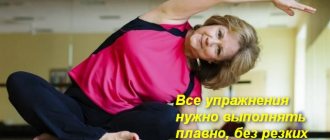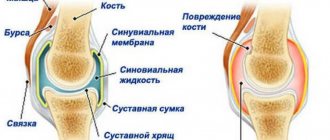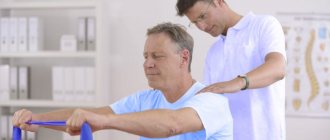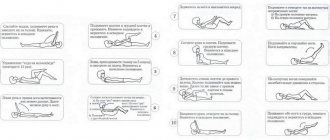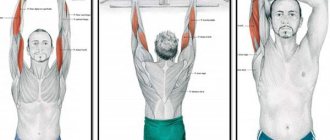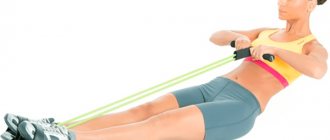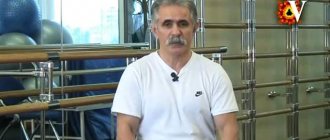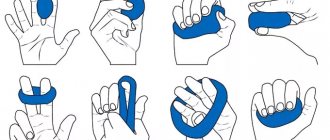Fractures, dislocations and sprains in the wrist area are quite common and significantly limit daily life. Regular performance of a full range of exercise therapy exercises for the rehabilitation of the wrist joint will help restore hand function faster. Gymnastics vary depending on the duration of the injury and its characteristics.
General methods of rehabilitation
Treatment and rehabilitation depend on the prevailing symptoms, characteristics of the injury, and the presence of complications. According to statistics, a fracture of the radius most often occurs in a typical area - in the area close to the wrist. This injury usually occurs when a fall hits the back of the hand.
A fracture necessarily requires immobilization, and in some cases, surgical treatment: in case of open damage, mixing of fragments, or development of an infectious process. At the same time, drug therapy with painkillers, anti-inflammatory drugs, antibiotics, chondroprotectors, and calcium supplements is prescribed. In case of tendon and muscle ruptures, surgical intervention and the application of a fixation splint are also necessary.
Exercise therapy and massage usually begin on the third day of injury with breathing, ideomotor and isometric techniques. Active activities are possible after 2 weeks.
Contraindications to exercise therapy for joint injury are:
- State of shock;
- Excessive blood loss;
- Risk of damage to a vessel or nerve trunk;
- Intense pain;
- Infectious complications;
- Severe diseases of internal organs.
Alternative techniques
Eastern medicine offers some techniques that help restore blood circulation in the affected tissues, relieve swelling from the tissues and reduce pain. For fractures of the hand and wrist, yoga asana exercises are recommended and should be performed daily. Gymnastics takes up to 5 minutes. It is necessary to fix the positions for 15-30 seconds in both directions.
- Take a side support lying down, leaning on a perpendicularly located forearm. The legs are in an extended position. The limb at the top is extended above the head.
- Feet shoulder-width apart, arms clasped behind your back - one limb on top and the other on bottom.
- Cross your forearms above your head and bend toward the floor in a standing position, with your forearms touching the surface of the support.
- The arms are extended above the head. The head is turned towards the hands. Perform a lunge on the leg bent at the knees, the other lower limb is extended back with emphasis on the inside of the foot.
Additionally, exercises with rubber balls and various types of elastic bands are possible:
Objectives and stages of exercise therapy after fractures of the forearm bones
The main points that are aimed at training the muscles of the forearm and hand after a fracture are to accelerate the healing process. This is achieved by the following mechanisms:
- Restoring blood circulation in the affected area;
- Reducing swelling after an arm fracture;
- Rapid formation of callus;
- Suppression of inflammation and pain;
- Restoring the mobility of muscles and joints of the arms after prolonged immobilization, preventing contractures.
Exercise therapy at different stages has its own characteristics and pursues different goals.
Stage I, immobilization
This is the initial stage of rehabilitation, which usually begins 3 days after the injury, during the period of time when a plaster cast or other immobilizing device is applied to the limb. Main tasks of the early period:
- Relieve swelling;
- Improve blood flow through the vessels of the forearm and hand;
- Activate metabolic processes in the musculoskeletal system of the upper limb;
- Stimulate regeneration processes.
Important!
When performing exercises at this stage, it is important to be careful not to provoke displacement of bone fragments and not to aggravate the situation.
Stage II, post-immobilization
The duration of wearing a circular plaster cast or other similar structures is determined individually and controlled by radiographic data. Usually you need to wear it for 2-3 months. After the cessation of immobilization, both the gymnastics itself and its main goals and objectives change:
- Restore the integrity of bones, ligaments and muscles;
- Restore muscle strength and performance;
- Improve mobility and flexibility of the wrist joint;
- Adapt the brush to your usual daily activities.
Options for complications
Timely initiation of rehabilitation measures is an important factor in recovery after traumatic injuries. If the patient ignores the doctor and does not follow the recommendations, complications arise. The most common unfavorable situations are:
- Formation of persistent pain syndrome.
- Development of deforming osteoarthritis and ankylosis of the joint.
- Stiffness of structures.
- Formation of a false joint.
- Slowing of bone fusion, which requires surgical intervention with osteosynthesis.
- The appearance of avascular necrotic bone changes that must be removed.
Exercise therapy for a wrist fracture should be performed by a qualified specialist. Incorrect manipulations can lead to the appearance of Sudeck syndrome - trophic and vasomotor disorders, which are accompanied by osteoporosis and pain.
How to develop a limb in a cast
In the early recovery period, when the hand is still in a fixed position, exercises to develop the wrist joint after a fracture or other injury are gentle and affect only the fingers, elbow and shoulder joints. The duration of one workout should not exceed a quarter of an hour. Breathing exercises, ideomotor and isometric gymnastic elements are considered the most effective and safe.
Treatment with breathing techniques
Respiratory exercises can relieve pain and saturate damaged tissues with oxygen, which accelerates their regeneration. There are 2 different breathing techniques that need to be mastered during the treatment process:
- Diaphragmatic breathing. Lie on your back, place one palm on your stomach, the other on your chest. As you inhale, only the palm on your stomach should move, the other one remains motionless. If it is difficult to place your hand in this way because of the splint, use another technique. In the same lying position, bend your legs towards your stomach, which should rise as you inhale, and retract as you exhale. After exhaling as much as possible, hold your breath for a few seconds.
- Chest breathing. As in the first option, we place one hand on the chest, and the second on the abdominals. Only now, as you inhale, your hand should rise on your ribs. Another technique is performed lying on your stomach so that the load on the intercostal muscles is greater. As you inhale, the upper parts of the body should clearly rise, as if “pushing off” from the floor, and return back as you exhale.
Ideomotor exercises
This is a kind of mental training when gymnastic elements are worked out only mentally. The nerve impulses formed in this case stimulate the work of peripheral nerves and regulate vascular tone. You need to clearly imagine how the immobilized hand moves while performing specific tasks:
- Wrist flexion and extension;
- Rotation with brush;
- Clenching and unclenching fingers into a fist;
- Rotates the forearm in and out.
Note!
If during ideomotor exercises you feel involuntary trembling of individual muscle fibers, heat in your hand and increased heart rate, then you are doing the exercises correctly.
Muscle stimulation without movement
Isometric gymnastics after a fracture of the wrist joint is characterized by tension in the muscles of the hand and forearm, without active movements in the limb:
- In a lying position, press on the support first with only your palm, and then with your entire forearm.
- Now imagine that something heavy is placed on top of your hand, and try to lift it, overcoming the resistance.
- Pretend that you want to squeeze a large, hard object with your palm.
- Imitate rotating your forearm outward and inward through resistance.
Helpful advice!
When performing these tasks, make sure that the hand does not actually start to move, as this can cause complications.
Exercise therapy during immobilization
The first exercises are recommended to be performed starting from the second day after application of the immobilization device. Considering the amount of restriction due to the presence of a plaster cast, the following elements of gymnastics can be performed:
- Motor activity of fingers I-IV - spreading, flexion, extension, moving the phalanges.
- Supination, pronation, circular rotation in the elbow joint.
- Flexion, extension, circular rotation of the shoulder joint.
Exercise therapy after a wrist fracture should be performed daily for 3-5 minutes. You can watch video lessons in which a specialist shows you how to perform the exercises correctly. The movements should be smooth and slow, they can be repeated up to 4-6 times throughout the day. Massage of free areas of the upper limb in the form of rubbing and stroking is allowed.
Important! Forceful loads on the hand are not allowed. The appearance of pain during gymnastics is a reason to consult a doctor.
Post-immobilization period after displacement or fracture
Rehabilitation after a fracture of the radius does not end with its healing. Despite the restoration of normal bone structure, after a long forced position, the function of the limb suffers significantly. This is due to muscle atrophy, loss of the correct movement algorithm, and reduced excitability of nerve fibers.
Treatment complex after plaster removal
The first workouts should last no more than 15 minutes, then their duration and intensity can be gradually increased, using various sports equipment.
- We clench our fingers into a fist and then relax.
- In turn, we connect the pad of the thumb with all the others.
- We connect the brushes into a lock and stretch them in different directions, then, on the contrary, we press them against each other.
- Let's imitate playing the piano.
- We bend and extend the arm at the wrist joint.
- Perform circular movements with the brush.
- We clap our hands in front of the chest and behind the back.
- Place your palm edge-on on the table surface. We alternately place it on the table with the palm side and then the back side.
- We roll a ball placed under the palm surface on the table.
- We tie the laces.
Water gymnastics
An effective way of rehabilitation for a fracture of the wrist joint is physical therapy in the pool, since less gravity makes it easier to perform many movements:
- We clench our hand immersed in water into a fist and rotate it in a circle.
- We spread our fingers like a fan and connect them together.
- We alternately perform dorsal and palmar flexion of the hand.
- We make wave-like movements with our fingers.
- Now we imitate wave-like movements with clasped hands.
- Emerging from the water, we clap our hands.
There are several useful wrist fracture exercises that you can do in your own bath:
- Throwing and rolling balls on the surface of the water.
- Sponge squeezing.
- Moving small objects along the bottom of the bathtub.
Occupational therapy at home
Occupational therapy allows the patient to restore fine motor skills after a fracture of the radius or injury to tendons and muscles, as well as regain the ability to perform professional and everyday activities:
- We sculpt figures from plasticine or clay;
- We draw with pencils or a brush;
- We play the piano;
- We make applications;
- We embroider or knit;
- We sew soft toys;
- We go through small mechanisms.
There can be many options, the main thing is that such an activity is enjoyable.
Attention!
Any restorative treatment can be carried out only against the background of moderate, tolerable pain. If the pain becomes acute and severe, then the activity should be stopped and the doctor informed.
Terms of rehabilitation
It is difficult to accurately determine the total rehabilitation period. There are many factors at play here:
- Competence of all rehabilitation therapy;
- Complexity of the fracture;
- Presence of fragments;
- Type of hand injury;
- Consistency and regularity of exercises.
When the fracture of the radial hand is simple, exercise therapy to restore the radial bone can lead to excellent results in a short time. And literally in a month, even earlier, you can restore mobility and functionality to your hand, and remove all restrictions on the functioning of the joints. This is possible with a simple fracture of the radius, in which there is no displacement. If the fracture is fragmented, displaced, or complex, rehabilitation may take more than three months.
Unfortunately, the recovery period is most difficult for elderly patients. The recovery period is significantly longer, since bone tissue already has low regenerative capacity. In addition, the body has a significant lack of mineral salts, which is not so easy to replenish.
Children and teenagers recover faster, since the cells regenerate much better. When the injury occurs without displacement, rehabilitation may take less than a month.
Exercise therapy for a fracture of the radius is a key method of recovery. It is extremely important to regularly and consistently perform a special set of physical exercises. The complex is selected individually, taking into account all the features of the fracture. This is the only way to fully restore the hand’s functionality and endurance.
At the same time, exercise therapy is not the only method of recovery. Massage and physiotherapeutic procedures are also used. Some people prefer to supplement the general course of treatment with some traditional medicine. Everything must be done according to the recommendation, under the direct supervision of a doctor.
Recovery period
This is the final rehabilitation stage, where the focus is on increasing the range of motion in the joint, building muscle mass and restoring muscle strength, and mastering fine movements. During this period, the following loads on the limb are possible:
- Exercises with a skipping rope and a gymnastic stick;
- Hand training using a regular or gyroscopic expander;
- Weighted exercises, the use of dumbbells weighing 2-4 kg is allowed;
- Limb stretching;
- Honing everyday skills - tying shoelaces, opening locks and hinges, stirring food, etc.
Rehabilitation methods
We can conditionally divide all rehabilitation actions into initial and final, which are carried out after immobilization of the hand. The first stage of rehabilitation is needed to prevent limitation of the patient’s mobility. In addition, this therapy allows you to well maintain the tone of muscle tissue. This prevents the development of atrophic processes in the injured limb.
When the plaster cast is removed, rehabilitation reaches a whole new level.
The patient needs to completely restore the mobility of the injured arm, regain full muscle strength and endurance.
At the same time, it is important to prevent joint stiffness and remove all restrictions on the mobility of the damaged joint.
Massage after injury
Massage improves blood and lymph circulation in the area of damage, while activating metabolism, stimulating nerve endings and accelerating tissue regeneration. The procedure is usually prescribed in the first days of treatment before exercise therapy to prepare the muscles for stress.
Massage and self-massage includes the following techniques:
- Stroking. Performed with light movements, without pressure, from the periphery to the center.
- Trituration. This is a more active effect, in which the upper layers of the skin are shifted in different directions.
- Kneading. They mainly knead the muscles of the palm, as well as the area around the elbow and shoulder joints.
- Vibration. The masseur imitates vibration movements with fingers collected in a pinch.
- Squeezing. Intense pressure on the palmar surface of the hand. Done with caution.
Therapeutic exercises are important not only for rehabilitation after injury, but also for the wrist joint affected by arthrosis. Rehabilitation treatment, if necessary, should combine surgical correction, immobilization, medication support, exercise therapy, massage and physiotherapy. Only with an integrated approach will it be possible to achieve the desired result.
Main directions of gymnastics
A feature of the wrist bones is slow tissue regeneration. This occurs due to the small periosteal cover and the anatomical location of the bones. Therefore, for good fusion of fragments and callus formation, it is necessary to include physical activity as early as possible. Gymnastics includes:
- performing simple exercises while wearing a plaster cast;
- conducting a rehabilitation course of exercise therapy using auxiliary devices.
Important! Gradual physical activity accelerates the processes of natural osteosynthesis and accelerates the restoration of full function.

